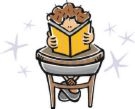I'm reading William Benham's The Laws of Scientific Hand Reading, and I thought it was interesting enough to do my TT this week about this book.
13 Things about William Benham's The Laws of Scientific Hand Reading:
1. It's palmistry, but it is scientific. Really. Benham read thousands, or more likely tens of thousands, of hands and put together all the information in this book based on the consistency of the markings/signs/shape/etc of the hands he read and the characters of the people they belonged to.
2. I read this book many, MANY, years ago, and read many hands before, and I have found the information to be very accurate. I haven't been in practice for the last 7 years though, so now I'm reading the book again to relearn what I've forgotten.
3. The copy I'm reading is the 18th edition of the book, published in 1971. My father bought it in 1975, and although some of the pages are falling out, it's still in pretty good shape for a book that's almost 40 years old!
4. It was originally published in 1900!
5. One of the first things to learn about reading hands, has nothing to do with reading the palm itself, but in seeing how the hands are held. Loosely at the sides, or clenched tightly? Does the person hide his hands in his pockets, or hold them behind his back, or are his hands hanging limp and loosely at his sides, only slightly open, or held completely closed?
6. You can tell so much about a person's character from his hands, before you even get to reading the lines on the palms!
7. Other than seeing the way he holds his hands, you can also tell a lot by the texture of the hands. Are they smooth and refined like a baby's hands? Or course and rough? Or somewhere in between, with elastic and firm textured hands?
8. The consistency of the hands also tells a lot. Is it a hard or soft? Flabby or firm? Is the flesh bouncy like a sponge or pliant like clay? You can tell if the person is lazy or hardworking, and if they recover easily from a failure or if they take it very hard.
9. How about the flexibility of the hands? Is it a stiff hand or a flexible hand? You can tell if the person is a rigid, stubborn person, or if he's flexible and adaptable, or if he's too easily swayed by other's opinions from the flexibility of the hands.
10. You can also tell a lot of things from the color of the hands, the shape of the nails and their quality, the hair on the hands, and the individual fingers. The thumb by itself can also tell you much about their owner.
11. Palmistry is usually seen as a parlor trick and is always viewed with a lot of skepticism, but Benham's use of the word 'Scientific' in relation to his study of hands is accurate, and for that reason, I have a enormous respect for his work and the information contained in the book.
12. Truthfully though, I have been really out of touch with reading hands, and I've forgotten so many details. I have to do a lot of study and practice, before I become good at hand reading again.
13. I have to admit that I'm a person who is extremely interested in trying to understand people and their characters, and that's a very big reason why I love learning about and reading hands.
I don't have many details to share about hand reading at the moment, because I've only just started reading it again. I'm on page 36, and have barely relearned what I use to know very well. I hope it'll come back to me soon.






















0 comments:
Post a Comment